News
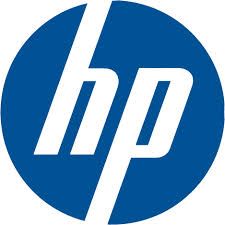
07/05/2014
The new Hewlett-Packard world development center for 3D printers will be in Barcelona
The new Hewlett-Packard world development center for 3D printers will be in Barcelona
The Hewlett-Packard (HP) American company has chosen Barcelona to host the world development center for 3D printers. The news was announced on last April 10 by CEO Meg Whitman during her visit to Spain.
HP abandoned the 3D printers market but decided to come back and promises products to address the two challenging issues of speed and quality.
The development center will be located very close to the Barcelona Synchrotron Park, in a place where HP already has its world corporate headquarter for large size printers with more than 2,000 employees, including R+D, marketing and business operations.
3D printers are a promising market and HP thinks that the world sales of printers and related software and services could reach $11 billion by 2021 compared with $2.2 billion in 2012.
HP abandoned the 3D printers market but decided to come back and promises products to address the two challenging issues of speed and quality.
The development center will be located very close to the Barcelona Synchrotron Park, in a place where HP already has its world corporate headquarter for large size printers with more than 2,000 employees, including R+D, marketing and business operations.
3D printers are a promising market and HP thinks that the world sales of printers and related software and services could reach $11 billion by 2021 compared with $2.2 billion in 2012.
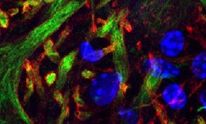
28/04/2014
Loss of memory reversed in Alzheimer's mice models
Loss of memory reversed in Alzheimer's mice models
Researchers from the Institute of Neuroscience have been able to reverse memory loss in its initial stages in model mice with Alzheimer's disease through gene therapy.
According to Carlos Saura, head of this research that appears on the cover of The Journal of Neuroscience, “this study opens up new perspectives on therapeutic prevention and treatment of Alzheimer's disease, given that we have demonstrated that gene therapy which activates the Crtc1 protein is effective in preventing the loss of memory in lab mice".
The Institute of Neuroscience belongs to the UAB University that the Barcelona Synchrotron Park works with.
Press release
According to Carlos Saura, head of this research that appears on the cover of The Journal of Neuroscience, “this study opens up new perspectives on therapeutic prevention and treatment of Alzheimer's disease, given that we have demonstrated that gene therapy which activates the Crtc1 protein is effective in preventing the loss of memory in lab mice".
The Institute of Neuroscience belongs to the UAB University that the Barcelona Synchrotron Park works with.
Press release
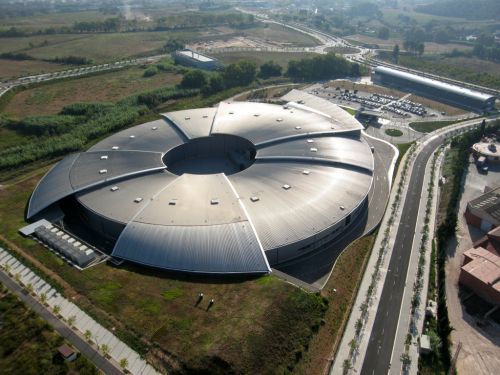
25/04/2014
More than 30 companies attended the ALBA industry workshop
More than 30 companies attended the ALBA industry workshop
Renowned companies working in the area of Chemistry and Materials Science, like CEPSA, ERCROS or AC MARCA group, were among the attendees.
The aim of the workshop organised last week by ALBA was to illustrate the industrial applications of the ALBA Synchrotron in the field of Chemistry and Materials Sciences to the almost 50 registered participants.
During the event different scientists from ALBA explained how the current ALBA beamlines can be used to solve complex structures of cement, pigment or food components or how synchrotron light can help to promote cleaner energy (through catalytic processes to control vehicle emissions or developing new fuel cells). It was also remarkable the role that synchrotron light can play to improve cosmetics and other healthcare productssuch as shampoo, soap, etc. "Synchrotron light offers analytical solutions to companies for saving time and money due to the fact that some experiments can be very short – in some cases, just one day – and with non-destructive methods", says Miguel Ángel García Aranda, scientific director of ALBA.
Avelino Corma, founder and researcher of the Instituto de Tecnología Química de Valencia (ITQ), gave an enlightening talk on how synchrotron light is helping in the development of new chemical processes of industrial interest. He showed several cases of success directly related to his investigation.
The last speaker was Chou Kan Wei, researcher funded by Henkel, who explained how the German multinational company uses synchrotron-based research to develop new adhesive materials.
All the attendees had the opportunity to visit the experimental hall of ALBA and the beamlines' equipment and capabilities. Companies and scientists could also discuss about future industrial experiments to be performed in ALBA.
The ALBA Synchrotron management considers that this activity has been very positive."This event shows the mutual interest between industry and the synchrotron. ALBA is a large scientific infrastructure available for the Spanish industry", says Alejandro Sánchez, responsible of the Industrial Office of ALBA.
ALBA, which is in operation since 2012, has already performed some industrial experiments and has ongoing collaborations with industry.
Redaction: ALBA
The aim of the workshop organised last week by ALBA was to illustrate the industrial applications of the ALBA Synchrotron in the field of Chemistry and Materials Sciences to the almost 50 registered participants.
During the event different scientists from ALBA explained how the current ALBA beamlines can be used to solve complex structures of cement, pigment or food components or how synchrotron light can help to promote cleaner energy (through catalytic processes to control vehicle emissions or developing new fuel cells). It was also remarkable the role that synchrotron light can play to improve cosmetics and other healthcare productssuch as shampoo, soap, etc. "Synchrotron light offers analytical solutions to companies for saving time and money due to the fact that some experiments can be very short – in some cases, just one day – and with non-destructive methods", says Miguel Ángel García Aranda, scientific director of ALBA.
Avelino Corma, founder and researcher of the Instituto de Tecnología Química de Valencia (ITQ), gave an enlightening talk on how synchrotron light is helping in the development of new chemical processes of industrial interest. He showed several cases of success directly related to his investigation.
The last speaker was Chou Kan Wei, researcher funded by Henkel, who explained how the German multinational company uses synchrotron-based research to develop new adhesive materials.
All the attendees had the opportunity to visit the experimental hall of ALBA and the beamlines' equipment and capabilities. Companies and scientists could also discuss about future industrial experiments to be performed in ALBA.
The ALBA Synchrotron management considers that this activity has been very positive."This event shows the mutual interest between industry and the synchrotron. ALBA is a large scientific infrastructure available for the Spanish industry", says Alejandro Sánchez, responsible of the Industrial Office of ALBA.
ALBA, which is in operation since 2012, has already performed some industrial experiments and has ongoing collaborations with industry.
Redaction: ALBA
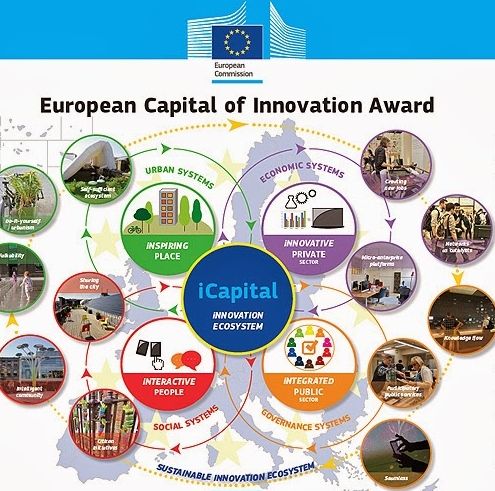
15/04/2014
European Commission names Barcelona first European Capital of Innovation
European Commission names Barcelona first European Capital of Innovation
The European Commission named last month Barcelona the first European Capital of Innovation. This newly created prize was decided in the final phase, with Barcelona winning out over Grenoble (France) and Groningen (Netherlands).
The decisive factors in Barcelona receiving this recognition are the fact that it is a productive city and that it is improving management through new technology for the benefit of its inhabitants. Other elements that make Barcelona the most innovative city in Europe are its role as Mobile World Capital and that all of the related events are participative in nature.
It must be noted that Barcelona is a pioneer in the development of smart cities, self-sufficient cities, productive neighborhoods and those with zero emissions. Examples of these include the new bus network and the teleservice initiative, which helps improve quality of life for residents.
Barcelona Catalonia, The Mediterranean Innovation Hub
The decisive factors in Barcelona receiving this recognition are the fact that it is a productive city and that it is improving management through new technology for the benefit of its inhabitants. Other elements that make Barcelona the most innovative city in Europe are its role as Mobile World Capital and that all of the related events are participative in nature.
It must be noted that Barcelona is a pioneer in the development of smart cities, self-sufficient cities, productive neighborhoods and those with zero emissions. Examples of these include the new bus network and the teleservice initiative, which helps improve quality of life for residents.
Barcelona Catalonia, The Mediterranean Innovation Hub

11/04/2014
Visit of the Spanish State Secretary for research to the Barcelona Synchrotron Park (BSP)
Visit of the Spanish State Secretary for research to the Barcelona Synchrotron Park (BSP)
On April 8, the Spanish State Secretary for research, development and innovation, Carmen Vela, visited the Barcelona Synchrotron Park at the invitation of the mayor of Cerdanyola del Vallès, the town where the BSP is located.
Carmen Vela visited first the SENER engineering and construction company that set up its Barcelona headquarters in the BSP. The manager presented the innovation strategy of the multinational with operations in 15 countries and 5,500 employees, and accompanied the State Secretary during the visit of some facilities.
The State Secretary went then through the BSP with Pere Solà, the director. She obviously had the opportunity to discover the ALBA synchrotron, the infrastructure of the park as the ST4 polygeneration plant that provides companies with cooling, heating and electricity, the Silc La Caixa – IBM Data Center already operative and the one under construction, the T-Systems Data Center completed few months ago or the ongoing construction work of the 30,000 m2 new DataCenter cluster, etc.
Carmen Vela visited first the SENER engineering and construction company that set up its Barcelona headquarters in the BSP. The manager presented the innovation strategy of the multinational with operations in 15 countries and 5,500 employees, and accompanied the State Secretary during the visit of some facilities.
The State Secretary went then through the BSP with Pere Solà, the director. She obviously had the opportunity to discover the ALBA synchrotron, the infrastructure of the park as the ST4 polygeneration plant that provides companies with cooling, heating and electricity, the Silc La Caixa – IBM Data Center already operative and the one under construction, the T-Systems Data Center completed few months ago or the ongoing construction work of the 30,000 m2 new DataCenter cluster, etc.
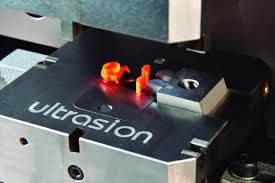
02/04/2014
High-precision molding in the PTV
High-precision molding in the PTV
As reported in the newspaper El Mundo last week, the ASCAMM technology center located in el Parc Tecnològic del Vallès (PTV), next door to the Barcelona Synchrotron Park, patented the USM technology (Ultra Sound Molding) that allows microcomponents molding using ultrasonic waves to heat and melt the material. This microinjection system is commercialized by the Ultrasion spin-off company located in ASCAMM, that has developed Sonorus 1G, the first microsonic micro molding machine in the world.
Companies that develop high added value products with high-precision parts might be interested by this technology, such as companies in the medical and biomedical sector, telecommunication, electronics, precision engineering, etc.
The ASCAMM technology center aims to generate new production technologies and to transfer them to its industrial environment.
ASCAMM works in widely differing sectors, such as transport, health, construction, industrial equipment and energy, electrical appliances and consumer electronics, packaging, together with plastic and metal transformation.
ASCAMM
ULTRASION
Companies that develop high added value products with high-precision parts might be interested by this technology, such as companies in the medical and biomedical sector, telecommunication, electronics, precision engineering, etc.
The ASCAMM technology center aims to generate new production technologies and to transfer them to its industrial environment.
ASCAMM works in widely differing sectors, such as transport, health, construction, industrial equipment and energy, electrical appliances and consumer electronics, packaging, together with plastic and metal transformation.
ASCAMM
ULTRASION









